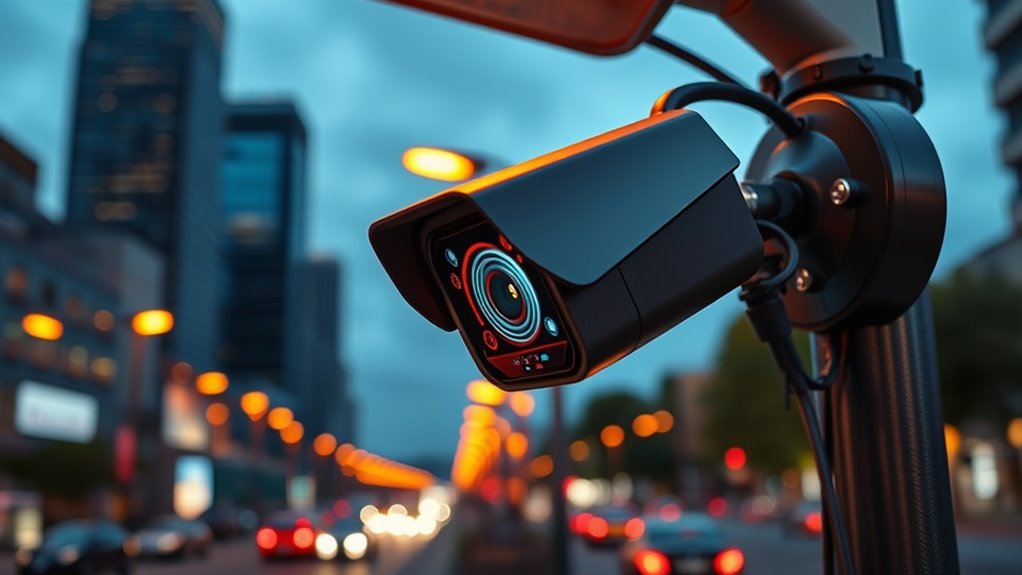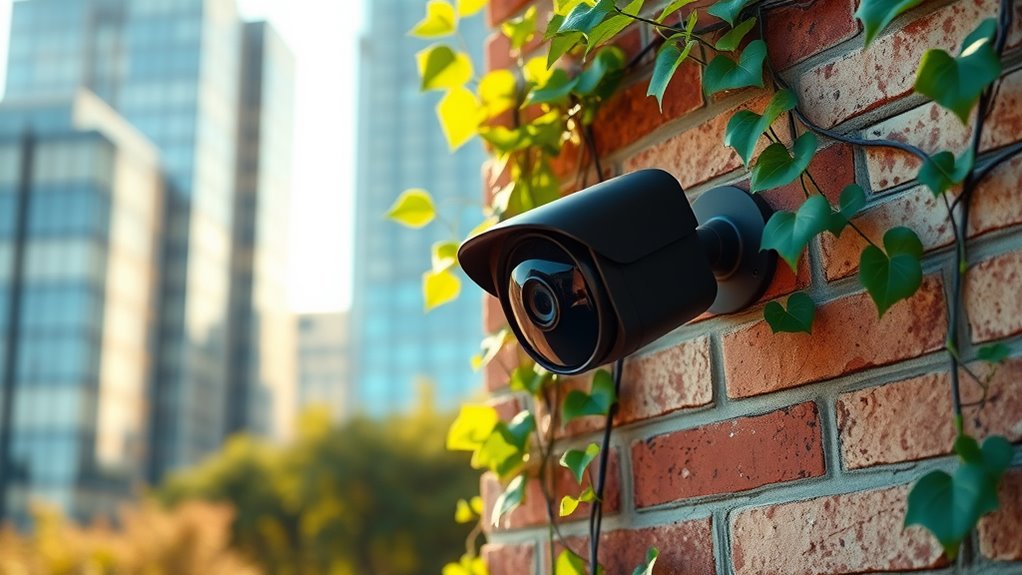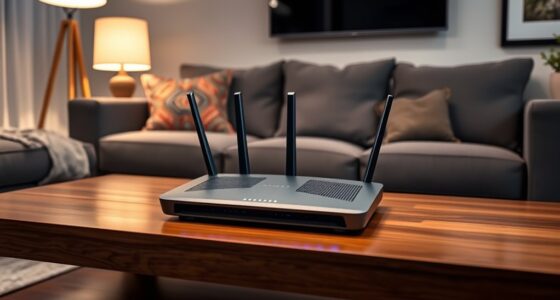Edge computing in smart cameras lets you process data locally, meaning less reliance on cloud storage and faster responses. It reduces bandwidth use, improves privacy, and cuts down on data breaches by keeping sensitive footage on-site. While hardware limitations and security are concerns, advances in AI and processors help overcome these hurdles. If you want to understand how this shift affects your security and privacy, there’s more to explore below.
Key Takeaways
- Edge computing enables real-time processing and analysis directly on smart cameras, reducing reliance on cloud servers.
- Local data handling enhances privacy and security by minimizing transmission of personal information to the cloud.
- Hardware limitations require efficient processors for on-device AI tasks, driving innovations in camera design.
- Processing at the edge decreases bandwidth costs and improves response times for security and monitoring.
- Advances in AI hardware enable smart cameras to perform complex analysis locally, supporting more autonomous and private systems.

Edge computing is transforming smart cameras by enabling real-time data processing right at the source, reducing latency and bandwidth usage. This shift means your cameras can analyze footage instantly without relying on distant servers, allowing for faster responses in security, traffic management, or retail environments. However, as you adopt this technology, you might encounter privacy concerns. Processing sensitive data locally helps keep personal information on-site, reducing the risk of breaches during transmission. Still, some worry that increased local data collection could lead to more surveillance or misuse if not properly managed. It’s imperative to balance the benefits of immediate analysis with strict privacy protocols to guarantee user trust and compliance with regulations.
Edge computing in smart cameras enables instant data analysis at the source, but raises important privacy and security considerations.
Alongside privacy, hardware limitations pose a significant challenge. Smart cameras equipped with edge computing capabilities require powerful processors to handle complex tasks like facial recognition or vehicle detection. However, these devices often have limited space, power, and cooling options, restricting their computational capacity. You might find that some cameras struggle with processing demands or need frequent hardware upgrades to stay current. These constraints can affect the overall performance, making it critical to select devices designed with scalable and energy-efficient components. Manufacturers are working to optimize hardware so that cameras can deliver high-quality analysis without excessive power consumption or cost.
The move toward edge computing in smart cameras also influences how you manage data. Instead of sending all footage to the cloud, you can configure systems to only transmit relevant clips or alerts, saving bandwidth and reducing cloud storage costs. This setup not only speeds up incident detection but also alleviates concerns about data overload and cloud dependency. Nonetheless, you must consider the security of local devices, as they can become targets for cyberattacks. Proper encryption, regular updates, and network security measures are essential to protect sensitive data stored on or processed by these edge devices.
Furthermore, as technology advances, you’ll notice a trend toward integrating AI and machine learning directly into smart cameras. This integration enhances their ability to distinguish between normal activity and genuine threats, making security more efficient. Yet, deploying such sophisticated features demands more powerful hardware, which may exacerbate existing hardware limitations or increase costs. Balancing these factors requires careful planning and choosing the right hardware solutions that meet your specific needs without compromising privacy or performance. Additionally, advancements in high-performance processors are helping to overcome some hardware limitations, enabling more complex analysis directly on the edge device.
Frequently Asked Questions
How Secure Is Data Processed on Edge Smart Cameras?
You might wonder how secure data processed on edge smart cameras is. Generally, it’s quite safe because data encryption is often used to safeguard information during transmission and storage. Additionally, processing data locally reduces privacy concerns since sensitive footage doesn’t need to leave your device. However, you should stay aware of potential vulnerabilities and ensure your cameras have strong security measures to prevent unauthorized access.
Can Edge Cameras Operate Without Internet Connectivity?
Imagine a security camera in your home that keeps watch even during a power outage—that’s offline operation. Edge cameras can indeed operate without internet connectivity by relying on local storage, like a built-in hard drive or SD card. This means they can record and analyze footage independently. So, yes, your smart camera can function offline, ensuring continuous security even when the internet drops.
What Are the Cost Differences Between Edge and Cloud Solutions?
When comparing cost differences between edge and cloud solutions, you’ll find edge computing offers better cost savings upfront because it reduces ongoing data transmission and storage expenses. Scalability options at the edge are more controlled, letting you expand gradually without hefty infrastructure investments. Cloud solutions may seem flexible but often incur higher long-term costs due to data transfer, storage fees, and increasing bandwidth needs. You choose based on your budget and scalability goals.
How Do Edge Cameras Handle High Data Traffic Volumes?
You can handle high data traffic volumes with edge cameras by utilizing data compression techniques to reduce file sizes, ensuring smoother transmission. These cameras also manage bandwidth effectively through smart bandwidth management, prioritizing critical data and avoiding network congestion. This approach allows real-time processing at the edge, minimizing latency and decreasing the need for constant cloud communication, ultimately providing more efficient and reliable surveillance even during high data traffic periods.
What Are the Environmental Impacts of Deploying Edge Devices?
You might not realize it, but deploying edge devices can considerably impact the environment. For example, electronic waste from outdated devices contributes to 50 million tons globally each year. While they often consume less energy than centralized data centers, increased energy consumption from widespread deployment adds to carbon footprints. Balancing technological benefits with environmental impacts, like reducing electronic waste and managing energy use, is essential for sustainable growth.
Conclusion
As the horizon of technology gently shifts, smart cameras are quietly finding new ways to serve you better right at home. By embracing edge computing, they’re becoming more discreet yet more capable, seamlessly blending into your daily life. The cloud still plays a part, but it’s gracefully giving way to smarter, faster local processing. This subtle evolution promises a future where your security feels more intuitive and unobtrusive—an elegant step toward a more connected, yet serene, home environment.









